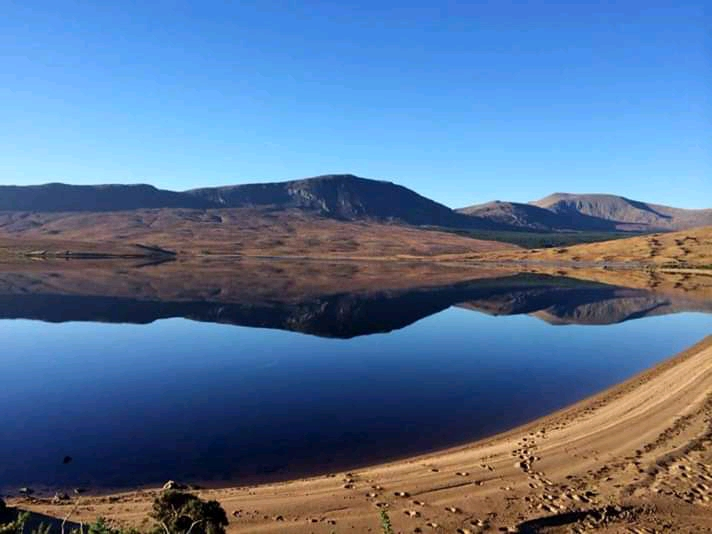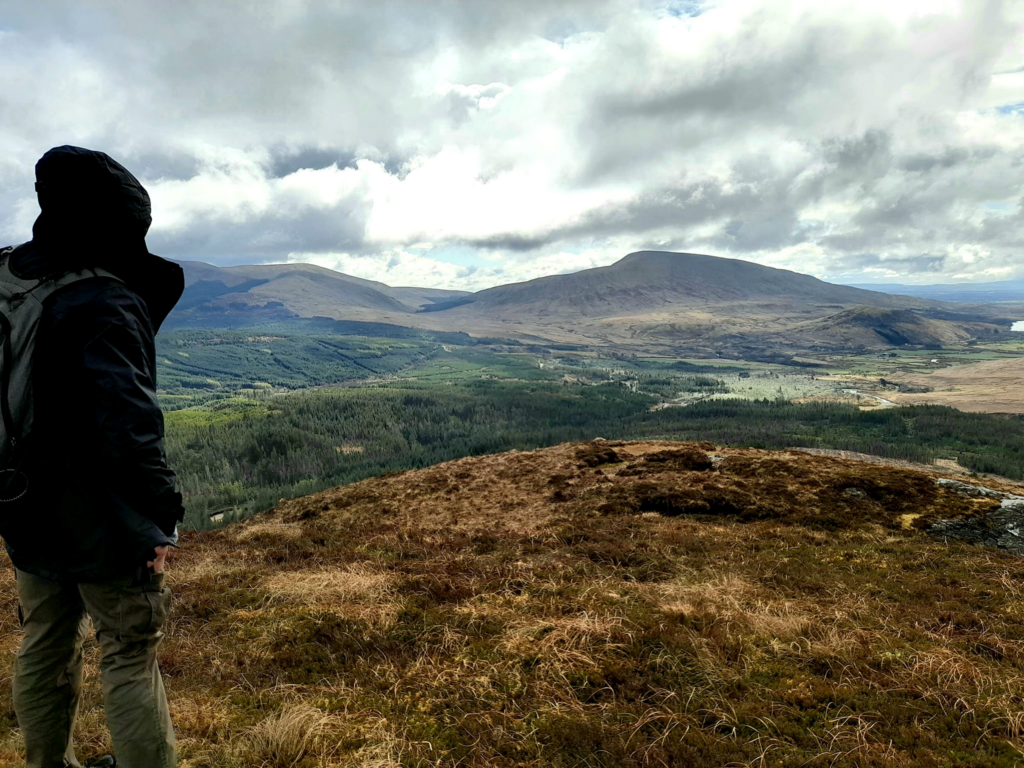by Michael Chambers
I have always felt a strong bond and had a great love for Nephin Beg Mountains. The fact that I was born and raised in the shadows of these remote mountains is what shaped the person I am today.
As a young lad I had often joined my father to the mountains, into the Glenamoo Valley. It was on these journeys to gather the sheep that my father told me the history of these mountains and of the people who passed through them. I was fascinated as a young boy listening to my father tell me stories about how my grandfather led the West Mayo Flying Column to safety from Glenamoo over the Maum to Glendahurk, as over 500 Black and Tans terrorised the Valleys throughout the mountains looking for the rebels. He pointed out where my great great grandmother was evicted from her home along with her children when her husband died, where there were graves from the famine times, and where the hidden mass places from the penal times were to be found. These were the stories of the people who once lived in this valley, which now like so many other valleys had fallen silent. But for me these stories awakened the valley; each mountain had a story to tell.
I felt as if I was still connected to the hills … and that I had a duty to keep those old stories from the mountains alive.
My father told me the story of how on one occasion my grandfather led the rebels through the hills away from Skirdagh. The British had sent a plane from Castlebar to look for the rebels, so the men had to hide and wait under the heather until the plane passed. I looked around confused, and asked what heather? No heather grows on these hills, I thought. Up until that point I thought that the bogs were wastelands, where nothing or very little grew; I hadn’t seen them in any other way. I looked into my father’s eyes and I can still remember the look of sadness as he went on to tell me how the heather would be as high as my legs but we ruined it by letting too many sheep on the hills. Then he made a statement that still lives with me to this day, “after all the trouble we had getting the land back this is what we let happen to it”. Even in the height of summer there was little for the sheep to graze on.
My father never let a sausage turf cutting machine onto his land as he believed it ruined the bogs. So our turf was cut by hand, and if that wasn’t done right he would be sure to let you know! By spending so much time with my father on the bogs and in the hills I learned so much about our past and about the wildlife that once flourished in the area, and how the loss of vegetation was the reason that the grouse, golden plover and the wild geese had nearly disappeared.

The years rolled on by and the vegetation returned to the valleys of Glenamoo and I found work that took me away from the sheep and the mountains. However as the stresses of life came and went I would always find myself back out hiking in the Nephin Beg Mountains, recalling the stories that my father had told me, which had, in turn, led me to make a number of discoveries in the mountains. I felt as if I was still connected to the hills, and that the burden of the past was my flung upon me, and that I had a duty to keep those old stories from the mountains alive. On my journeys I could see that there was still a lot of places in the hills where the vegetation was still struggling, and that like me when I was young, most people just accepted it as the norm. Many people would not have seen the heather bloom like it once did before the large increase of sheep in the mountains. I made a promise to myself and to the mountains that I would keep alive the stories and I would do as much as I could to help promote our mountains as an important habitat for our wildlife.
I was given that opportunity to learn more about the biodiversity and help promote our special place when I was offered a position as part of the team at the Ballycroy Visitor Centre in the National Park. I joined the team back in 2019 and I was delighted to meet such brilliant people such as Head Guide at the time Marina Mulligan and Supervisor Guide Margaret Flaherty who took me under their wings and brought me up to speed on our education programmes. The Centre also caters for groups and the general public through a programme of special events that include guided walks, talks and workshops, which are all free!

As Head Guide now myself, I feel so lucky to be given a platform where I could help educate the importance of our special place here among the Nephin mountains to the next generation, as well as tell the stories from the hills to the visitors that drop by. I feel it is my way of giving back something to all those who went before us, that gave so much so we could inherit this amazing part of Ireland. I feel as a local I can tell the story of what is was like as a small farmer trying to get by and how people did what they had to do just to get by. When we talk about the large plantations of conifers, overgrazing and the extraction of peat for the power plants, we must remember that these activities provided employment for a large number of people that would otherwise not have been able to stay in Mayo. Back then, people didn’t realise the impacts that their activities would have on the landscape in the long-term. Today we have the education and knowledge to understand the impact that our actions have had on our valleys and mountains and how our wildlife has suffered as a result. Today, it is about learning how to fix what we got wrong and to think of the future generations who will come after us. For it will be them that will judge us, and we will be judged on how we helped biodiversity when it was in crisis.
Michael Chambers is Head Guide at Wild Nephin National Park. He delivers ecology education and guided walks and has a deep knowledge of the Nephin Beg Mountains, their history and folklore.
